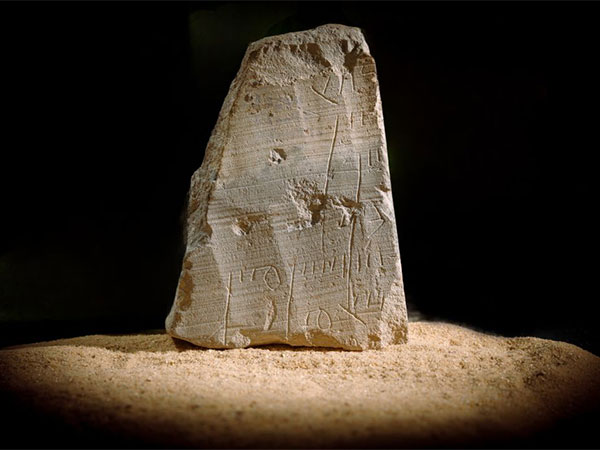Tel Aviv [Israel], 18 May: On the Pilgrimage Road in the City of David, which served as Jerusalem’s principal road during the Second Temple period, archaeologists from the Israel Antiquities Authority discovered a fascinating financial record dating back 2,000 years. The find provides a unique look into the daily lives of the city’s residents and sheds light on the commercial operations of the era.
It is thought that the writing, which was discovered on a small stone tablet etched with characters and figures, is a receipt or payment instruction from the time of the Second Temple. It was found at a place where there was a lot of commercial activity. The discovery was just reported in the peer-reviewed archaeological journal Atiqot. The City of David Foundation supported excavations in the City of David that uncovered the inscription, which has seven partially intact lines. Hebrew names are written on the lines together with letters and numerals. At the conclusion of one line, the Hebrew character “mem” is followed by the name “Shimon.” The remaining lines have numbers represented by symbols, some of which have the Hebrew letters “mem” or “resh,” acronyms for ”money” and “quarters,” respectively.
Other comparable Hebrew inscriptions, all marking names and numbers carved on related stone slabs and dating to the Early Roman period, have reportedly been discovered in Jerusalem and Beit Shemesh, according to Nahshon Szanton, the Excavation Director for the Israel Antiquities Authority, and Professor Esther Eshel from Bar Ilan University. However, this is the earliest inscription to have been discovered to date inside the limits of Jerusalem at that time.
The inscription, according to the experts, was initially carved onto a chalkstone slab that served as an ossuary, a type of burial container used often in Early Roman Jerusalem and Judea. Ossuaries are often found outside of cities, therefore it’s possible that local merchants or artists traded them as commodities given their existence there.
The City of David, located south of the Temple Mount, and the entrances of the Second Temple were connected by the Pilgrimage Road, an old and crucial thoroughfare. The road was a centre of commerce in addition to being the main path for those travelling on pilgrimages. Shops, markets, and other establishments that catered to the needs of the pilgrims and tourists lined the main thoroughfare. Traders and artisans would set up their establishments along the road, offering goods, food, and various services to those passing through.
New archaeological discoveries are continually being made as a result of the continuing excavation effort, which is being overseen by the Israel Antiquities Authority and funded by the City of David Foundation. These discoveries help us comprehend Jerusalem’s history better.
According to the experts, the use of receipts for business objectives at the period exhibits a striking likeness to contemporary practises.
“The amazing find in Jerusalem’s Pilgrimage Road reveals yet another facet of Jewish life in the city 2,000 years ago. Rabbi Amichai Eliyahu, Israel’s Minister of Heritage, stated that the distinctive excavations conducted by the Israel Antiquities Authority in the region “position the City of David as a pivotal centre in the Jewish people’s global historical narrative.”
The Pilgrimage Road excavations are being referred to as a “flagship project,” according to Eli Escusido, director of the Antiquities Authority. He stated that the numerous finds 0being made in the excavation “shed light on the centrality of this road even during the Second Temple period.” Our knowledge of the neighbourhood grows with each discovery, highlighting the significance of this street in Jerusalem residents’ daily lives the year 2000 years ago.























